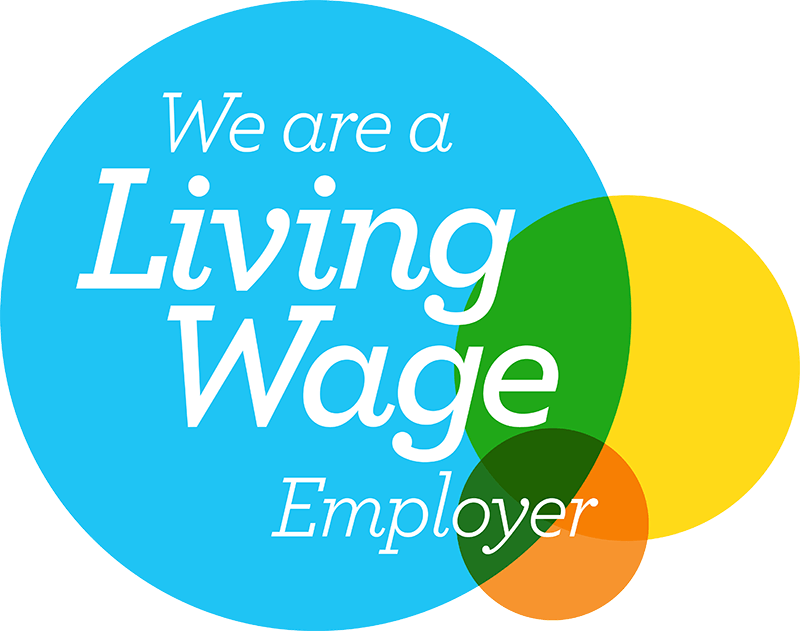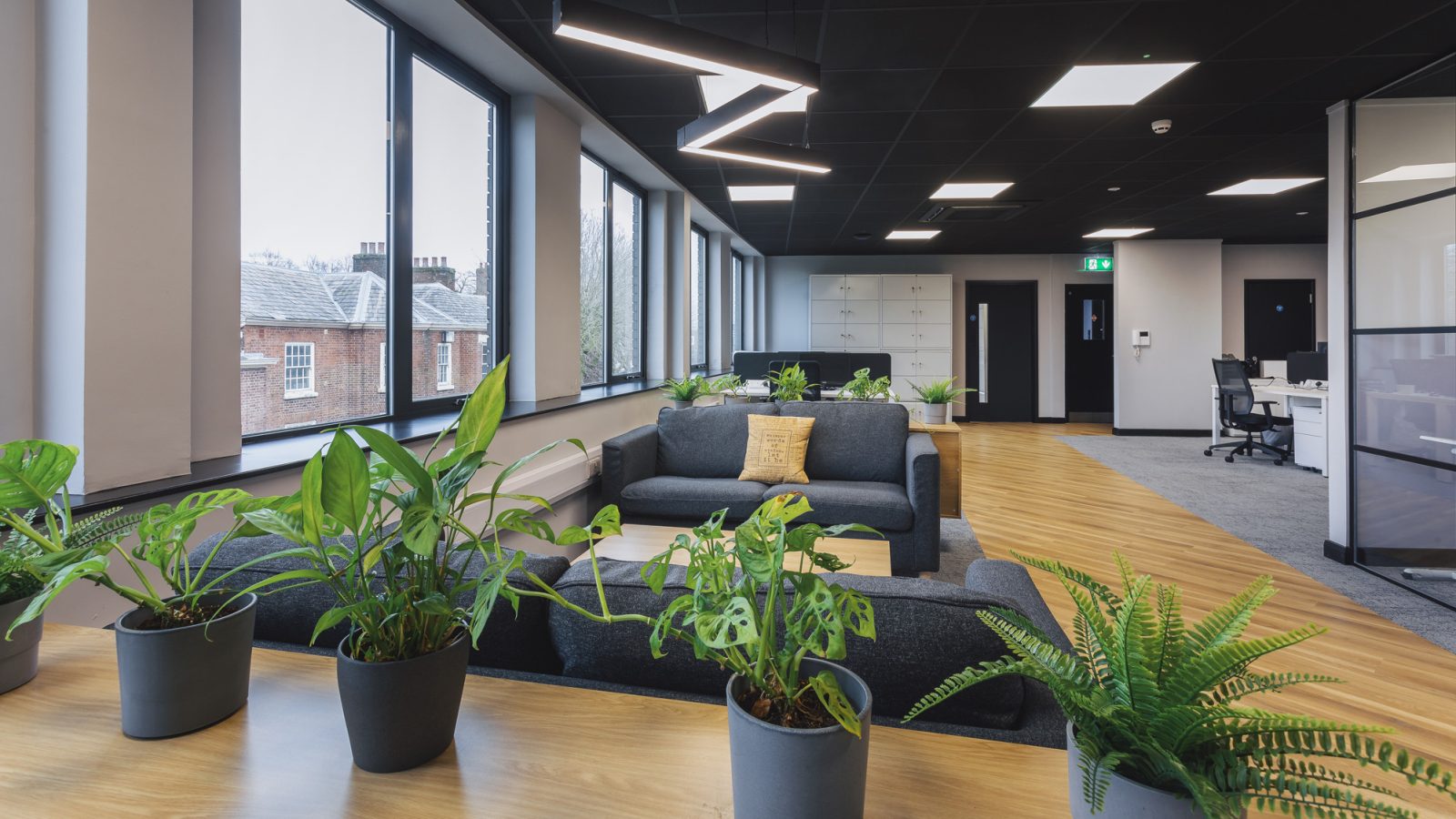
As we enter the second half of 2024, the demand for new, innovative office design ideas becomes increasingly important. Workplace design trends are influenced by how companies change their workplace strategies. As more businesses seek premium workspace offerings that encompass modern business ethics and workplace ethos, the office design trends of 2024 will continue to be moulded by these ideas.
Gone are the days when employees clocked in and out of work, staying in one place and not really engaging with their surroundings. 2024 office design trends seek to incorporate employee happiness and satisfaction and make the workplace a space that inspires productivity and creativity.
Now more than ever, businesses are focused on the quality of their workplaces. As businesses seek to reduce their office carbon footprint, many office spaces are getting smaller, which means office design has to be smarter and more efficient with use of space. Office spaces must also justify their existence either as an alternative to remote working or as relevant to coexist with a hybrid working model.
If it isn’t apparent by now, the modern workplace has to incorporate many different elements. So, let’s take a look and break down the top ten office design trends for the rest of 2024.
Enhanced Collaboration & Teamwork
The value that idea-sharing and teamwork can bring to almost any business is invaluable. As such, modern workspaces should enable this whenever they can. Modern office designs should include communal areas, adaptable meeting spaces, and agile communication technology. The office design should include accommodations for all team members, no matter whether they are in the office or they work from home, and require communication via video conferencing. Furthermore, these spaces must operate beyond simple communication; they must allow for ease of productivity, shared creative ideas, and be a place where workers feel proud to communicate and work with each other.
If your new interior office design enhances communication and collaboration, your business and employees will reap the benefits.

Colour Psychology
Colour may not be the first thing that comes to mind when thinking of 2024 office design trends. Still, colour’s role in modern-day office design is becoming increasingly important. The influence of colour on productivity and mood has long been recognised, but current office design trends still try to encompass many of these practices.
We are witnessing a trend where colour palettes are meticulously selected to evoke specific emotions, ignite creativity, or foster a sense of tranquillity. Workspaces are designed with colours ranging from warm, earthy neutrals to soft pastels and rich jewel tones to create the desired atmosphere, such as cosiness or concentration.
For example, shades of blue, which are known to enhance productivity and improve focus and mental clarity, are ideal for general workspaces. Purple is often chosen for brainstorming areas, as it encourages creativity, fresh ideas and uniqueness. This deliberate use of colour, guided by behavioural science and colour psychology, is becoming increasingly vital in office design. It’s about crafting an environment that not only looks aesthetically pleasing, but that also feels right, addressing the specific needs and well-being of those using the space.
Remote First
Remote-first design is not about encouraging everyone to work from home. Quite the contrary: it’s about recognising that communication with remote workers will always be necessary in a post-pandemic landscape. This is where modern office design elements can help, prioritising ease of communication for those who cannot be in the room.
Navigating the complexities of some workers being in the room while others are not can be difficult; remote workers can often feel as though their voices are not heard or they are not part of the team. This can significantly hinder creativity and employee satisfaction. When constructing an office design which encompasses remote-first ideals, you must first consider the incorporation of technology. Remote workers will likely join meetings via camera, and this will be the lens through which they see you. Ensuring your office is designed in such a way that they can see everyone in the room is therefore vital. Changes like introducing D-shaped tables that fit flush against the wall have proven to enhance inclusion and participation among remote workers. This subtle design adjustment literally creates a space for remote workers at the table, fostering a more collaborative environment and making everyone feel included.
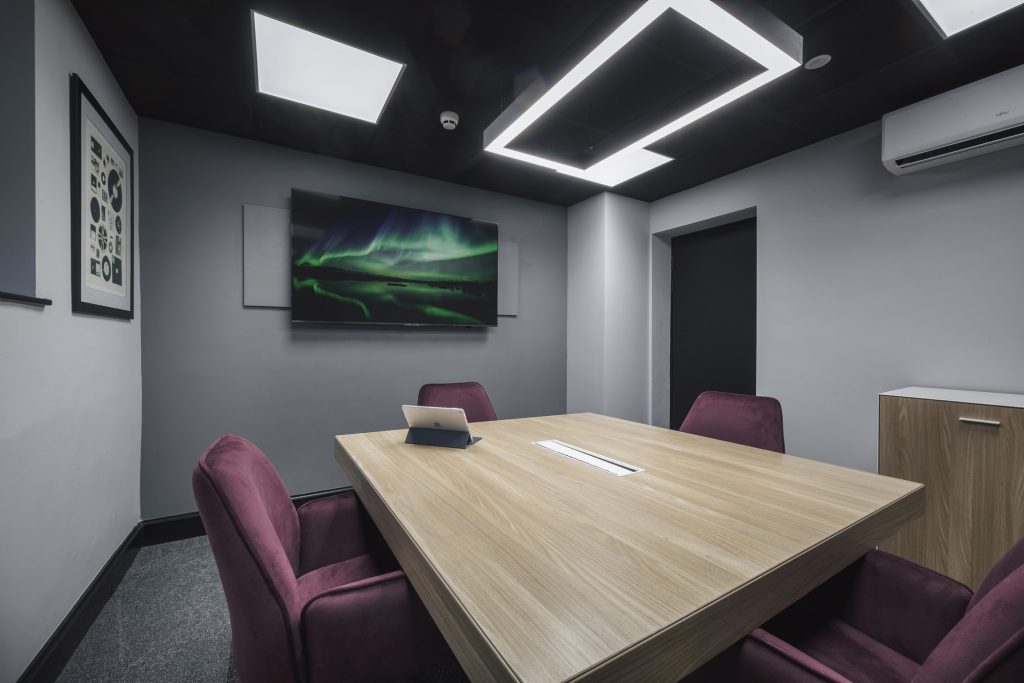
Sustainable Designs & Planning For The Future
Sustainability is not a trend: it’s a necessity. In 2024, modern businesses understand the need to opt for more sustainable office practices and designs, and this approach is becoming increasingly common. A commitment to sustainable office practices not only benefits the bottom line through energy savings, but also demonstrates a pledge to environmental values, which is very important to consumers and business partners. Sustainable office design is more than just shrinking the size of your office; in 2024, we expect to see more energy-efficient buildings, recyclable materials, and a push towards carbon-neutral offices.
Say Hello To The Smart Office
We are now firmly in the digital age. As we venture further into whatever technological advancements this exciting time may bring, it is no surprise that workplaces are continuing to incorporate cutting-edge technologies into their design. Technology can revolutionise how we work, and tech solutions can help to improve efficiency, sustainability, and comfort.
As we progress through the rest of 2024 and into 2025, we expect more advanced and integrated technology systems controlling lights, the office temperature (which can benefit those with neurodiversity and menopause and is great for overall well-being as well as diversity and inclusion), and booking meeting rooms. AI and IoT technology are also set to take on a more significant role in the office. These technologies are poised to take on duties such as automating and assigning tasks, managing workflow, enhancing creativity in the office space and improving the overall office experience.
Let The Light In
No one wants to work in a space with no natural light, where the only way to tell the passage of time is via the ticks of a clock, and there is little to no connection to the outside world. Science has proven that natural light in the workplace makes an employee feel better rested and more positive. In 2018, the HBR (Harvard Business Review) conducted a poll and found that 47% of employees feel tired from the lack of natural light, and 43% of them feel more ‘gloomy’ due to the omission of said light. Another more recent study at Cornell showed that workers exposed to natural light experienced an 84% drop in issues such as headaches, eyestrain, and blurred vision.
Furthermore, visitors to your office, whether potential clients, customers, or external partners, will feel that your office looks bigger if you let in natural light. With statistics like that, it’s not hard to see why natural light plays a pivotal role in office trends in 2024.
Embracing Biophilic Designs
While discussing incorporating natural elements into your office layout design, we want to highlight biophilic designs. The benefits of embracing and incorporating biophilic designs into your office have been widely recognised, with multiple studies highlighting the potential benefits and positive impacts. One such study was conducted by Human Spaces, which found that employees whose offices included natural elements scored 15% higher in creativity than those without.
To be clear, when we talk about “bringing the outside in”, we don’t mean you sit outside in a large field or set up a desk in a nearby bush. Biophilic designs strike a perfect balance between nature and professionalism. They incorporate elements such as live plants, natural light, green walls, and organic materials to create a rejuvenating and more relaxing work environment.
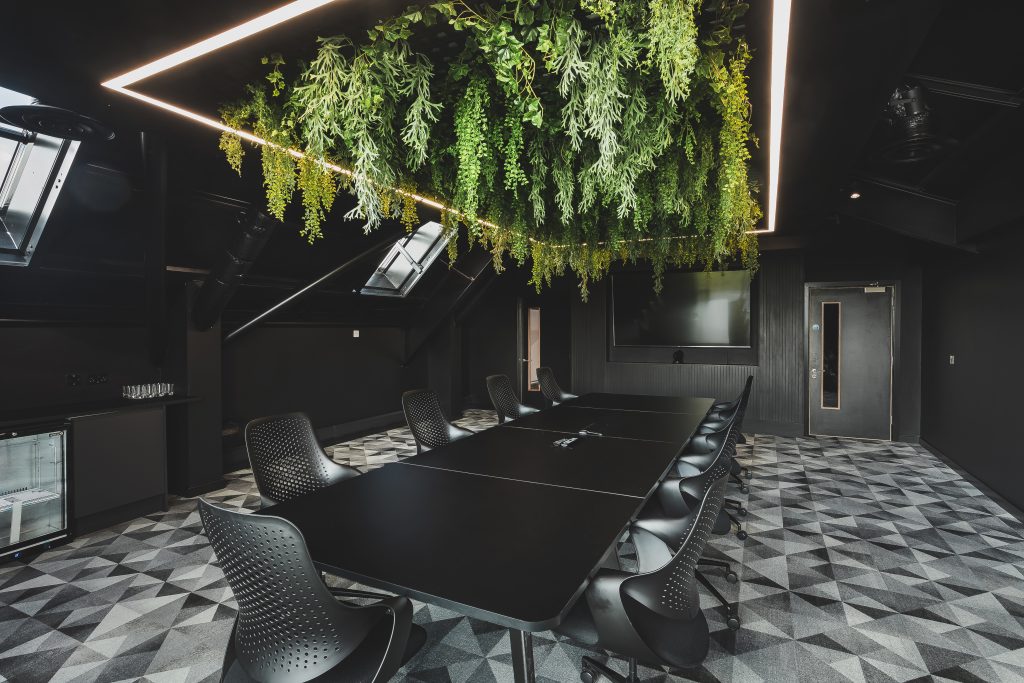
Encourage Movement and Change
The aim of encouraging movement and change goes beyond typical hot desking. The technique aims to avoid nesting and provide a much-needed change of scenery for employees. Encouraging employees to move and utilise the space that’s available to them has many surprising benefits.
As employees move, chance meetings between different departments become all the more common, which further enhances the feeling of interconnectivity in your company and improves the social aspects of work-life. Strategically placing different departments can help to promote cross-disciplinary interactions and discourage individuals from feeling isolated. Moving and changing the general office layout can be done so easily; all that is needed is to change the position of a few desks and tables, and it can make a big difference. If this technique is done properly, you can create a diverse workplace landscape that’s full of individuality and diversity.
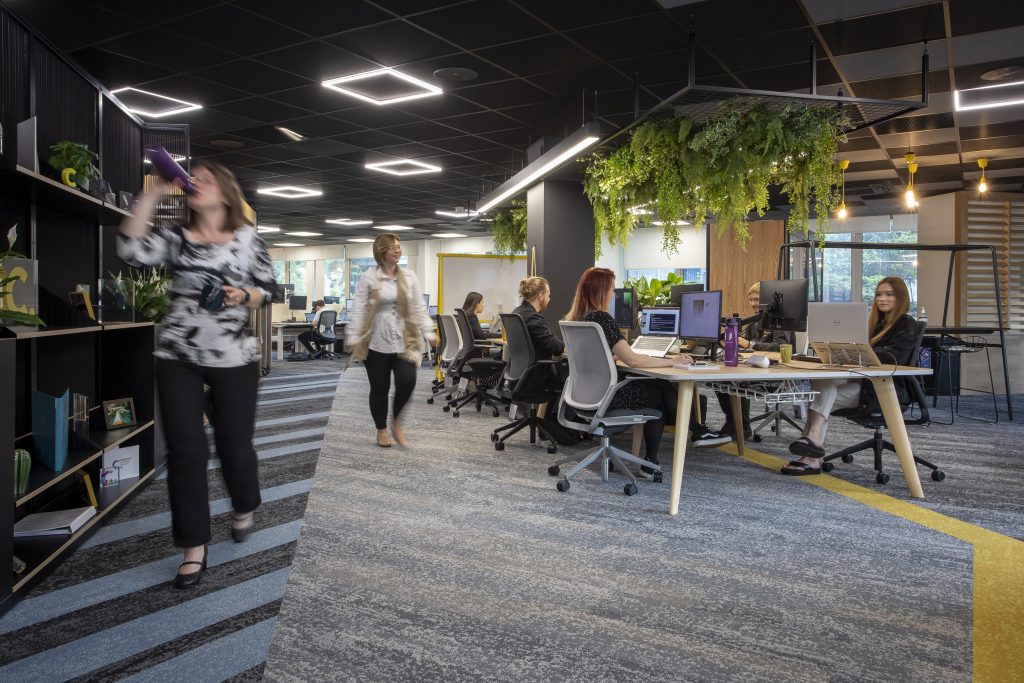
The Traditional Office Strikes Back: Return of the Office Desk
If you were to imagine a modern-day office design, you might imagine workers sitting on beanbags or liaising on large, stylish sofas. You would be forgiven for thinking that the traditional office desk may not be part of modern design because it is a remnant of the past. However, office design (as with domains such as fashion) must sometimes incorporate older ideals in order to have a more holistic approach, and it seems as though in 2024 the office desk is starting to make a triumphant return.
In the years following the pandemic, hybrid and remote working became more common. With this, the idea of the office desk started to seem outdated. After all, one of the main reasons for returning to the office after the pandemic was to collaborate with coworkers more efficiently, and the traditional office was not the best suited for allowing ease of communication. However, a recent report by XY Sense Workplace underscored a shift towards the office desk making a comeback. The data found that while there is still a need and preference for collaborative spaces (with a 32% collaboration rate), the need for a personalised workplace remains substantial, with a 26% utilisation rate. Perhaps more crucially, 30% of individual workstations are utilised for more than 3 hours a day, whereas around 50% of collaborative spaces are used for less than 3 a day.
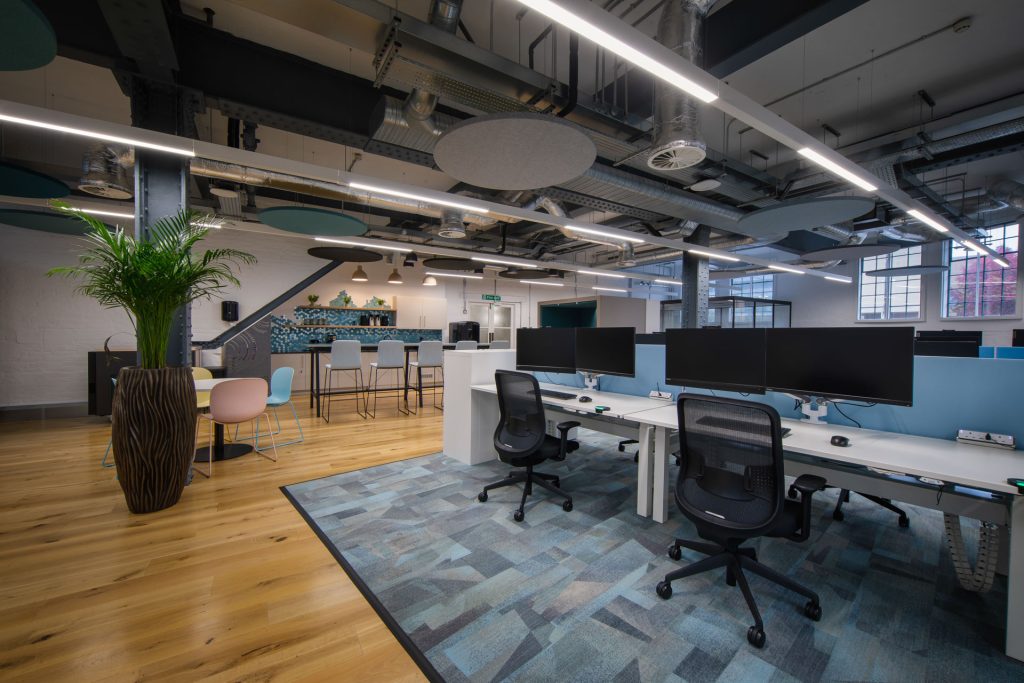
While we are by no means advising you to design your office around an office desk centrepiece, these statistics perfectly highlight the requirement for a traditional office desk. Perhaps this is why they have seen a resurgence in popularity: office desks are now being seen as more than just an essential at work; instead, they are being recognised for their multifaceted and essential uses. They can so easily be used for creativity, a place where employees can express their individualism through personalised pictures and memorabilia, and they’re fantastic tools to help improve efficiency at work.
A Wellbeing-Centric Design Is A Must
The vast majority of office occupants are employees, so it seems only right that office designs should put their well-being first. Modern office design trends do more than just contemplate employee well-being; many office designs put well-being at the forefront. The COVID-19 pandemic underscored the importance of employee health and well-being, especially in the office, as so many employees took a sizable amount of time away from their typical workspaces and some found their health improving slightly. As a result, office designs in 2024 focus even more on fostering environments that promote the physical and mental health of their employee occupants.
2024 office design trends seek to incorporate more recreational spaces to allow for more collaboration, ergonomic workplace furniture to prevent physical strain and injury, acoustic solutions to reduce noise stress and, as previously mentioned, allow for natural elements to flow effortlessly throughout the office. Air quality is also set to be a big feature of the 2024 office design, with designs putting emphasis on better ventilation systems to ensure a clean and healthy environment.
Discover the Latest Office Design Trends With Claremont
Are interested in learning about office design trends in 2024 and beyond? Or perhaps more importantly, if you feel your office design is not up to scratch, you can contact Claremont today. We offer many excellent services that can help to transform your office. Our services include interior office design, workplace consultation, cat b fit-outs, and more. So, what are you waiting for? Contact us today.
Related thinking
OFFICE INTERIOR
DESIGN & BUILD
From Workplace Consultancy through design, to the build and beyond. Whether you use all or part of our capabilities, you’ll find we’re a safe pair of hands.
Workplace Consultancy
Helping you achieve the optimal combination of people, space and technology, enabling your organisation to realise its maximum potential in a FutureFlexible way.
Design & Build
Claremont’s comprehensive in-house capability takes care of it all, it’s an end-to-end solution that mitigates risk, accelerates timescales and controls costs.
Workplace Furniture
We believe furniture has a huge impact on the people using it. We aren't limited to a specific range of suppliers, so finding exactly the right products for you or even designing you something unique is at the heart of our approach.
Workplace Technology
Just the right tech fully integrated with your space gives you that all-important agile and collaborative environment.
